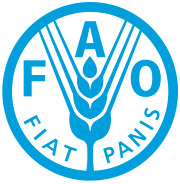L’Organisation des Nations unies pour l’alimentation et l’agriculture (connue sous les sigles ONUAA ou, plus couramment, FAO soit en anglais Food and Agriculture Organization of the United Nations) est une organisation spécialisée du système des Nations unies, créée en 1945 à Québec. Son siège est à Rome depuis 1951. La FAO regroupe 191 membres (190 États plus l’Union européenne)1.
Son objectif suprême affiché est « Aider à construire un monde libéré de la faim », sa devise, inscrite sur son logotype, est « Fiat panis » (expression latine signifiant « qu’il y ait du pain (pour tous) »).
Pour aider les pays pauvres et riches à mieux maîtriser leurs ressources et à avoir une vision prospective, la FAO offre aux utilisateurs enregistrés, depuis le 1er juillet 2022, gratuitement (l’abonnement était autrefois payant) toutes les statistiques de son service FAOSTAT, la plus vaste base de données mondiale sur l’alimentation, l’agriculture et la faim2. Son directeur général actuel est José Graziano da Silva. Le président indépendant du Conseil est Luc Guyau
.






.gif)








.gif) يا اغلى واجمل وارق اعضاء وزوار لمنتدياتنا الغالية
يا اغلى واجمل وارق اعضاء وزوار لمنتدياتنا الغالية 
.gif) وانتحر
وانتحر 
 اختكم بوطيغان سلمى
اختكم بوطيغان سلمى